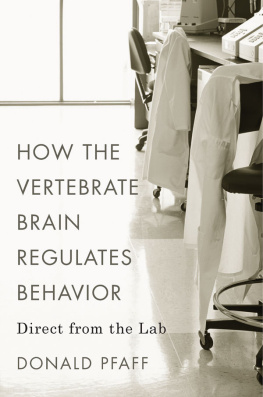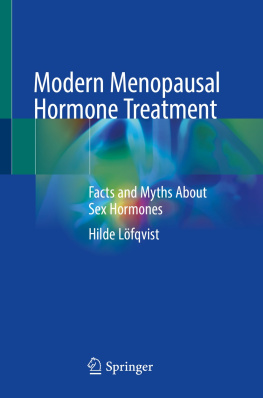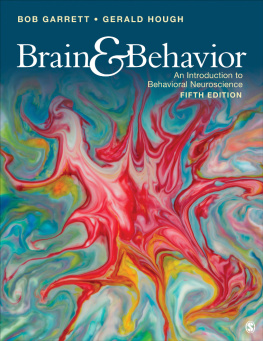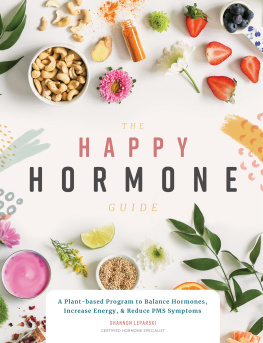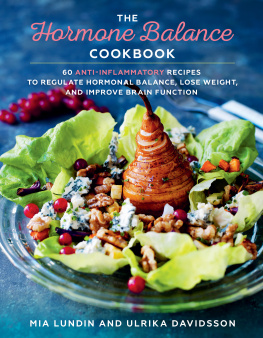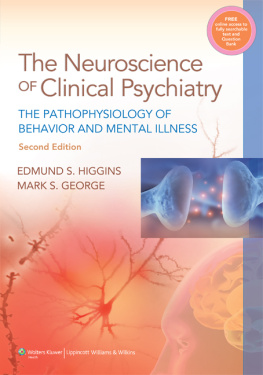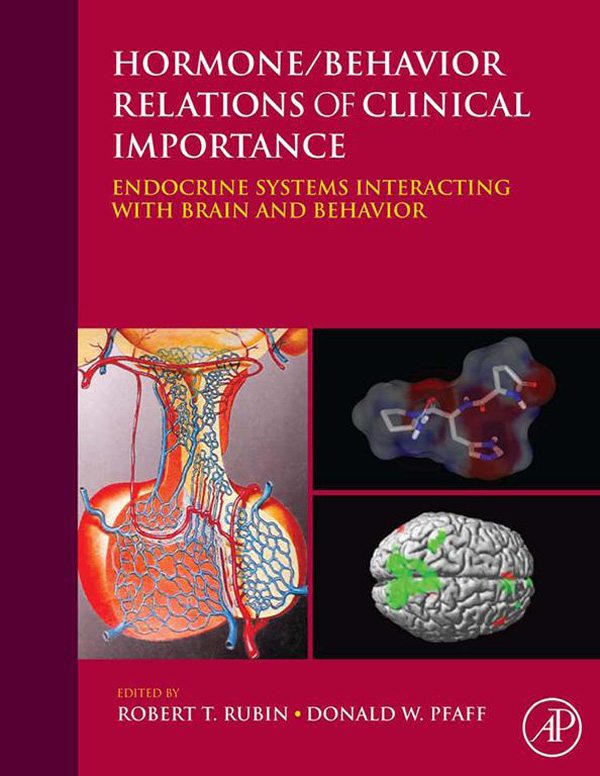Hormone/Behavior Relations of Clinical Importance
Endocrine Systems Interacting with Brain and Behavior
First Edition
Robert T. Rubin
Department of Psychiatry and Biobehavioral Sciences, University of California, Los Angeles, Los Angeles, California
Donald W. Pfaff
The Rockefeller University, New York, New York
Academic Press
Amsterdam Boston Heidelberg London New York Oxford
Paris San Diego San Francisco Singapore Sydney Tokyo
Academic Press is an imprint of Elsevier
Copyright
Academic Press is an imprint of Elsevier
Linacre House, Jordan Hill, Oxford, OX2 8DP, UK
525 B Street, Suite 1900, San Diego, CA 92101-4495, USA
Copyright 2009 Elsevier Inc. All rights reserved
Material in the work originally appeared in Hormones, Brain and Behavior, 2nd Edition , edited by D. W. Pfaff, A. P. Arnold, A. M. Etgen, S. E. Fahrbach and R.T. Rubin (Elsevier Inc 2009)
The following articles are US government works in the public domain and are not subject to copyright:
GONADAL HORMONES AND BEHAVIOR IN WOMEN: CONCENTRATIONS
VERSUS CONTEXT
NEUROREGULATORY PEPTIDES OF CENTRAL NERVOUS SYSTEM
ORIGIN: FROM LABORATORY TO CLINIC
THE NEUROENDOCRINOLOGY OF MOOD DISORDERS
HUMAN IMMUNODEFICIENCY VIRUS
AND ACQUIRED IMMUNODEFICIENCY SYNDROME
NEUROENDOCRINE ASPECTS OF POST-TRAUMATIC STRESS DISORDER
No part of this publication may be reproduced, stored in a retrieval system or transmitted in any form or by any means electronic, mechanical, photocopying, recording or otherwise without the prior written permission of the publisher
Permissions may be sought directly from Elseviers Science & Technology Rights Department in Oxford, UK: phone (+ 44) (0) 1865 843830; fax (+ 44) (0) 1865 853333; email: ), and selecting Obtaining permission to use Elsevier material
Notice
No responsibility is assumed by the publisher for any injury and/or damage to persons or property as a matter of products liability, negligence or otherwise, or from any use or operation or any methods, products, instructions or ideas contained in the material herein. Because of rapid advances in the medical sciences, in particular, independent verification of diagnoses and drug dosages should be made
British Library Cataloguing in Publication Data
A catalogue record for this book is available from the British Library
Library of Congress Catalog Number: 2009927235
ISBN: 978-0-12-374926-0
For information on all Elsevier publications
visit our website at www.elsevierdirect.com
PRINTED AND BOUND IN CHINA
09 10 11 12 13 10 9 8 7 6 5 4 3 2 1

Contributors
R.A. Allison (29, Transsexualism), CIGNA Medical Group of Arizona, Phoenix, AZ, USA
L. Baor (28, Assisted Reproduction in Infertile Women), Tel-Aviv, Israel
S.L. Berga (22, Premenstrual Dysphoric Disorder), Emory University, Atlanta, GA, USA
K.J. Berkley (36, Pain: Sex/Gender Differences), Florida State University, Tallahassee, FL, USA
M. Bettendorf (30, Disorders of Salt and Fluid Balance), University Clinic of Heidelberg, Heidelberg, Germany
S. Bocklandt (10, The Biology of Sexual Orientation and Gender Identity), UCLA School of Medicine, Los Angeles, CA, USA
L. Borg (35, Short-Acting Opiates vs. Long-Acting Opioids), The Rockefeller University, New York, NY, USA
G.D. Braunstein (19, Diseases of Hypothalamic Origin), Cedars-Sinai Medical Center, Los Angeles, CA, USA
R.S. Bridges (13, Prolactin Actions in the Brain), Tufts University School of Veterinary Medicine, North Grafton, MA, USA
W. Byne (11, Sexual Orientation in Men and Women), Mount Sinai School of Medicine, New York, NY, USA
L. Cahill (6, Sex Differences in Human Brain Structure and Function), University of California, Irvine, CA, USA
J.D. Carmichael (19, Diseases of Hypothalamic Origin), Cedars-Sinai Medical Center, Los Angeles, CA, USA
B.J. Carroll (21, Mood Disorders), Pacific Behavioral Research Foundation, Carmel, CA, USA
M.B.C.M. Cools (26, Genetic Defects of Female Sexual Differentiation), Ghent University, Ghent, Belgium
T.J. Creel (7, Sex Differences in CNS Neurotransmitter Influences on Behavior), Saint Vincent College, Latrobe, PA, USA
L. Czibere (1, Genetic Transmission of Behavior and Its Neuroendocrine Correlates), Max Planck Institute of Psychiatry, Munich, Germany
M. Daly (12, Sex Differences in Competitive Confrontation and Risk-taking), McMaster University, Hamilton, ON, Canada
A.B. Dessens (26, Genetic Defects of Female Sexual Differentiation), Sophia Childrens Hospital/Erasmus MC, Rotterdam, The Netherlands
S.L.S. Drop (26, Genetic Defects of Female Sexual Differentiation), Sophia Childens Hospital/Erasmus MC, Rotterdam, The Netherlands
N.N. Ekhator (16, Brain Peptides: From Laboratory to Clinic), University of Cincinnati, Cincinnati, OH, USA
J. Emens (17, Melatonin Actions in the Brain), Oregon Health and Science University, Portland, OR, USA
A.J. Fiocco (25, Aging and Alzheimers Disease), University of California, San Francisco, CA, USA
C.A. Frye (15, Neurosteroids: From Basic Research to Clinical Perspectives), University at Albany-State University of New York, Albany, NY, USA
S.N. Garfinkel (20, Stress and Anxiety Disorders), University of Michigan School of Medicine, Ann Arbor, MI, USA
N.E. Gentile (2, Hypothalamic-Pituitary-Adrenal Cortical Axis), Saint Vincent College, Latrobe, PA, USA
T.D. Geracioti, Jr. (16, Brain Peptides: From Laboratory to Clinic), University of Cincinnati, Cincinnati, OH, USA
E.S. Ginsburg (32, Alcohol Abuse: Endocrine Concomitants), Brigham and Womens Hospital, Boston, MA, USA
M.B. Goetz (38, Human Immunodeficiency Virus and AIDS), VA Greater Los Angeles Healthcare System, Los Angeles, CA, USA
L.J. Gooren (11, Sexual Orientation in Men and Women), VU University Medical Center, Amsterdam, The Netherlands
D.R. Grattan (13, Prolactin Actions in the Brain), University of Otago, Dunedin, New Zealand
J.A. Grootegoed (26, Genetic Defects of Female Sexual Differentiation), Erasmus MC, Rotterdam, The Netherlands
B. Hambsch (1, Genetic Transmission of Behavior and Its Neuroendocrine Correlates), Max Planck Institute of Psychiatry, Munich, Germany
V.L. Harsh (4, Hypothalamic-Pituitary-Gonadal Axis in Women), National Institutes of Health, Bethesda, MD, USA
M. Hines (8, Gonadal Hormones and Sexual Differentiation of Human Brain and Behavior), University of Cambridge, Cambridge, UK
A. Holdcroft (36, Pain: Sex/Gender Differences), Imperial College London, London, UK
J. Imperato-McGinley (27, Genetic Defects of Male Sexual Differentiation), Weill Medical College of Cornell University, New York, NY, USA
R.T. Joffe (3, Hypothalamic-Pituitary-Thyroid Axis), New Jersey Medical School, Maplewood, NJ, USA
B.A. Kaminski (9, Human Puberty: Physiology and Genetic Regulation), Rainbow Babies and Childrens Hospital, Cleveland, OH, USA
J. Kaskow (16, Brain Peptides: From Laboratory to Clinic), University of Pittsburgh Medical Center, Pittsburgh, PA, USA
I. Kravets (35, Short-Acting Opiates vs. Long-Acting Opioids), The Rockefeller University, New York, NY, USA
M.J. Kreek (35, Short-Acting Opiates vs. Long-Acting Opioids), The Rockefeller University, New York, NY, USA
R. Landgraf (1, Genetic Transmission of Behavior and Its Neuroendocrine Correlates), Max Planck Institute of Psychiatry, Munich, Germany


